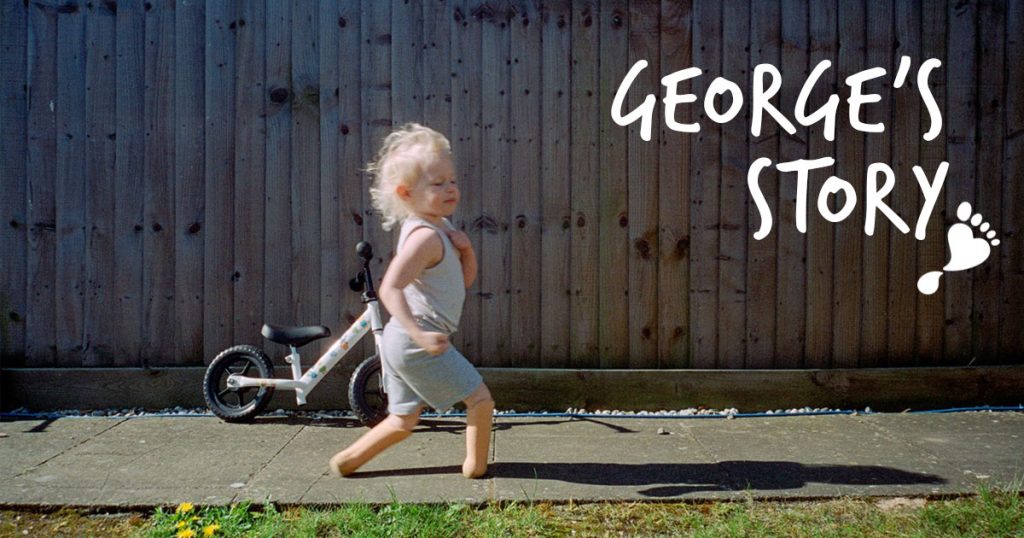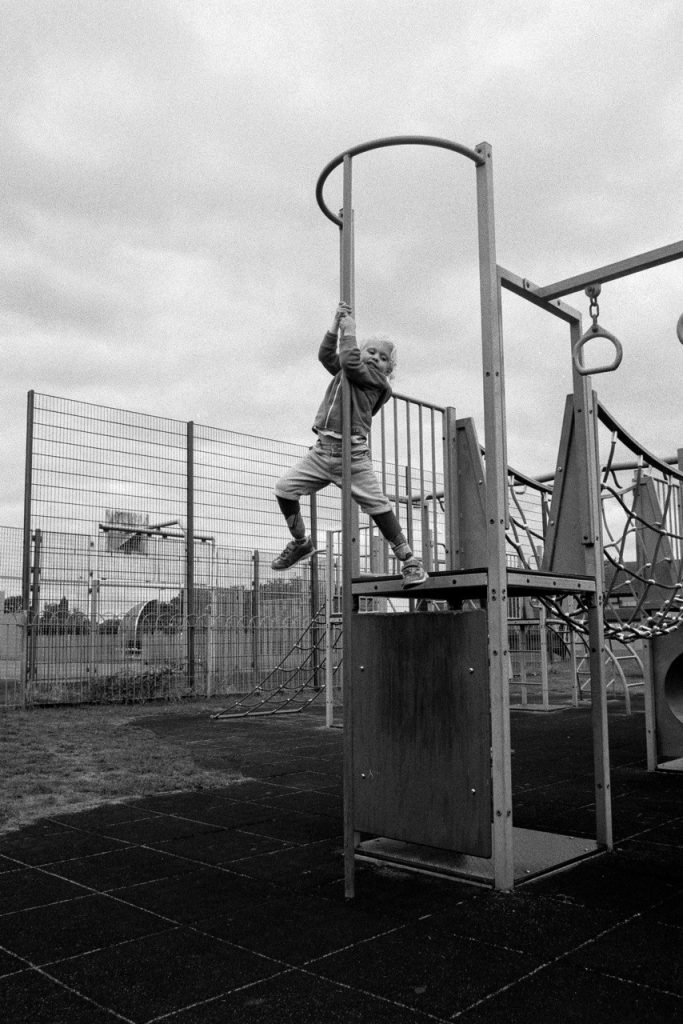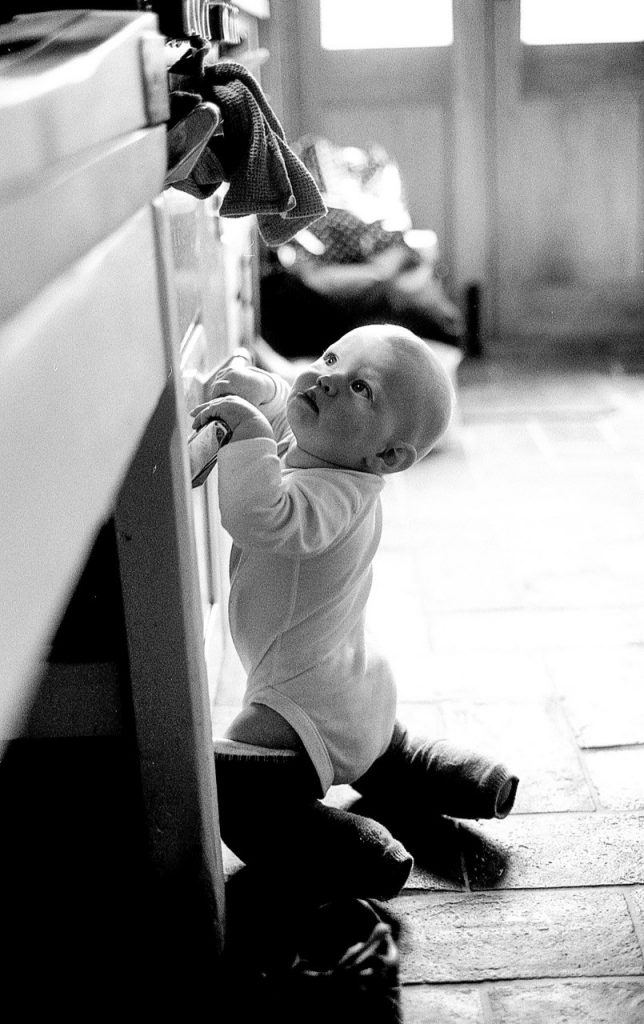
“Our first encounter of lower limb conditions was when we went for the 20-week scan with our first baby. We were expecting to see our baby again, get some scan pictures and be told everything was OK. We had read the sheet the hospital had sent out stating the list of conditions they could find, but we went with the mentality that we were sure everything would be OK. A trainee sonographer completed the scan alongside an experienced sonographer so it took a fairly long time. After about 45 minutes they had words with each other and looked a little concerned before leaving the room. On their return we were informed our baby seemed to have unilateral talipes and we would need to come back to be scanned by a consultant the following week. We were left feeling very confused, having no idea what unilateral talipes was. We were very emotional, especially when breaking the news to our family, with many thoughts of what had we done wrong. We returned the following week for the scan with the consultant. She confirmed our baby had talipes but this time said it was the other foot affected. It seemed a bit strange but the consultant brushed it off as the sonographer’s mistake. She booked an appointment for us to meet with the paediatric orthopaedic team.
The orthopaedic consultant was lovely and gave us details about STEPS charity who we immediately got in contact with. He advised us the baby would need to be referred to the nearest centre for Ponseti treatment once born as the casting needed to start as soon as possible. We spent the rest of the pregnancy researching Ponseti treatment and boots and bars as well as looking for clothing that would accommodate a baby with a cast on.
When George was born we forgot all about the talipes as we just fell in love with him. Mummy’s first words to him were, my gorgeous George (we had decided on Henry if it was a boy!).
When the paediatric doctor completed the baby check before we were discharged, we explained to her that the right foot appeared to be a club foot as we had expected, but the left ankle appeared very floppy. She wasn’t open to listening to our concerns, and was very rude when we talked to her about the referral to the nearest centre for treatment of the club foot. She refused to make the referral. We quickly registered with the GP and although she again didn’t feel there was any concern with either side, made the referral we needed.
We went to the first orthopaedic appointment when George was 3 weeks old. The consultant requested X-rays of both legs. On our return from X-ray we were called in to see the consultant again, who at this point had another consultant alongside him. This felt like we were going to be told bad news, and we both felt very anxious about what was to come. We were informed that George had bilateral fibular hemimelia, and asked if we knew who Oscar Pistorius was. This was hard to hear and obviously left us very shocked especially being given so little information about the condition our 3 week-old baby had. They decided to put him through serial casting as they were unsure what else to do. George had an MRI at 7 weeks and a tenotomy on the right at 8 weeks. The consultant George was under had only seen one child previously with fibular hemimelia so was also very unsure what to do and attempted to put George in boots and bars which failed. STEPS were helpful in containing our anxiety through email conversations throughout this time and we also found the video on their website about a little boy called Euan which was very reassuring too.
We decided to see a consultant from The RNOH privately for a second opinion. He was brilliant and gave us more information in 30 minutes than we had had in several months. He informed us that all the months of casting were unnecessary as well as the tenotomy. He immediately stopped further casting treatment and advised us to wait a while before deciding if we wanted to go down the route of reconstruction or amputation. He transferred George over to NHS and took his case to a European conference for more opinions. The answer came back 50:50 for both options. We debated over several months, read a lot and talked to many different families before finally making the decision to follow the amputation route. Once we had made the decision a weight lifted off our shoulders.
We visited the prosthetics department at RNOH which helped with all the questions we had and George had his amputation (bilateral Syme’s ankle disarticulation) surgery on the 30th April 2015 when he was 11-months old. It was an incredibly difficult day but we got through it with the support of our family. George was up standing on his casts within a day which reassured us this was the best decision we could have made for our very active little boy.
Over his first year George had always been ahead with his development, rolling at 3 months (we think the weeks of weight training with two casts on helped!) learnt to crawl and pull to stand at 7 months. He was trying to walk before he had his surgery from about 10 months although he never managed it due to the instability of his left ankle and stiffness of his right. Once the casts were off, George learnt to stand on his stumps (we call them his little feet) very quickly. He got his first pair or prosthetics at 13 months and was keen to learn to walk. By 17 months George was able to walk confidently with and without his prosthetics.
Today George is a very confident active 4 year-old who is learning to swim, loves gymnastics, running and playing with his brothers. George has just started school and is hoping to get some blades in the next couple of months to help him run faster and keep up with his friends.


